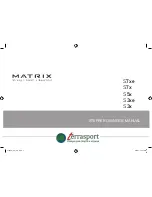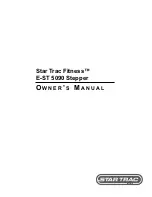
162
Troubleshooting
Condition
Cause
Reference
The machine is
noisy.
1. Thread is jammed in the hook area.
2. The feed dog is packed with lint.
See page 160.
See page 160.
The needle thread
breaks.
1. The needle thread is not threaded properly.
2. The needle thread tension is too tight.
3. The needle is bent or blunt.
4. The needle is inserted incorrectly.
5. The thread is too heavy for the needle.
6. The needle thread was not set in the thread holder when embroidery
sewing started.
See page 16.
See page 37.
See page 19.
See page 19.
See page 19.
See page 115.
The bobbin thread
breaks.
1. The bobbin thread is not threaded properly in the bobbin holder.
2. Lint has collected in the bobbin holder.
3. The bobbin is damaged and does not turn smoothly.
See page 15.
See page 160.
Replace the bobbin.
The needle breaks.
1. The needle is inserted incorrectly.
2. The needle is bent or blunt.
3. The needle clamp screw is loose.
4. The needle thread tension is too tight.
5. The needle is too fine for the fabric being sewn.
6. An inappropriate presser foot for the selected pattern is being used.
7. The fabric was pulled toward you when sewing free motion quilting with
the free motion quilting open-toe foot QO.
See page 19.
See page 19.
See page 19.
See page 37.
See page 19.
Use the correct foot.
See page 92.
Visual Touch Screen
is not clear.
1. The contrast of the screen is not adjusted properly.
See page 94.
Skipped stitches
1. The needle is inserted incorrectly.
2. The needle is bent or blunt.
3. The needle and/or threads are not suitable for the fabric being sewn.
4. A blue needle is not being used for sewing stretch, very fine or
synthetics.
5. The needle thread is not threaded properly.
6. The needle is defective (rusted, burr on needle eye or tip).
7. The embroidery hoop is not set properly.
8. The fabric is not stretched tightly enough on the embroidery hoop.
9. A purple needle is not being used for sewing thick fabrics, denims and
across the hem.
See page 19.
See page 19.
See page 19.
See page 19.
See page 16.
Change the needle.
See page 115.
See page 114.
See page 19.
Seam puckering
1. The needle tension is too tight.
2. The needle thread or the bobbin thread is not threaded correctly.
3. The needle is too heavy for the fabric being sewn.
4. The stitch length is too long for the fabric.
5. The stitch width is too wide.
6. The stabilizer is not being used.
See page 37.
See pages 15-17.
See page 19.
Make stitches shorter.
Reduce the stitch
width.
Use the stabilizer.
Slipping layers
1. The dual feed foot is not being used for sewing hard to feed
material.
Use the dual feed
foot.
The cloth is not
feeding smoothly.
1. The feed dog is packed with lint.
2. The dual feed foot is not being used for sewing hard to feed material.
3. The stitches are too fine.
4. The feed dog is lowered.
See page 160.
Use the dual feed
foot.
Make stitches longer.
See page 26.
The machine does
not run.
1. The machine is not plugged in.
2. A thread is caught in the hook race.
3. A faulty foot control is plugged in while the machine is turned on.
4. The start/stop button is used for ordinary sewing with the foot control
plugged in.
See page 9.
See page 160.
Replace the foot
control.
See page 9.
Summary of Contents for Skyline S9
Page 1: ...Instruction Book ...
Page 2: ......
Page 168: ...166 STITCH CHART Ordinary Sewing Block Script Broadway Block 9 mm ...
Page 169: ...167 STITCH CHART Ordinary Sewing Cyrillic Mincho 9mm Symbol Marumoji 9mm ...
Page 176: ...174 DESIGN CHART Embroidery Gothic Script Cheltenham Bauhaus Galant Typist ...
Page 177: ...175 DESIGN CHART Embroidery Brush First Grade Hollowblock Jupiter Micro Gothic ...
Page 178: ...176 DESIGN CHART Embroidery Cyrillic 1 Cyrillic 2 Cyrillic 3 Mincho Marumoji ...
Page 179: ...177 DESIGN CHART Embroidery 2 letters 3 letters Border Normal Sew ...
Page 180: ......
Page 181: ......
Page 182: ...862 460 008 EN ...
















































